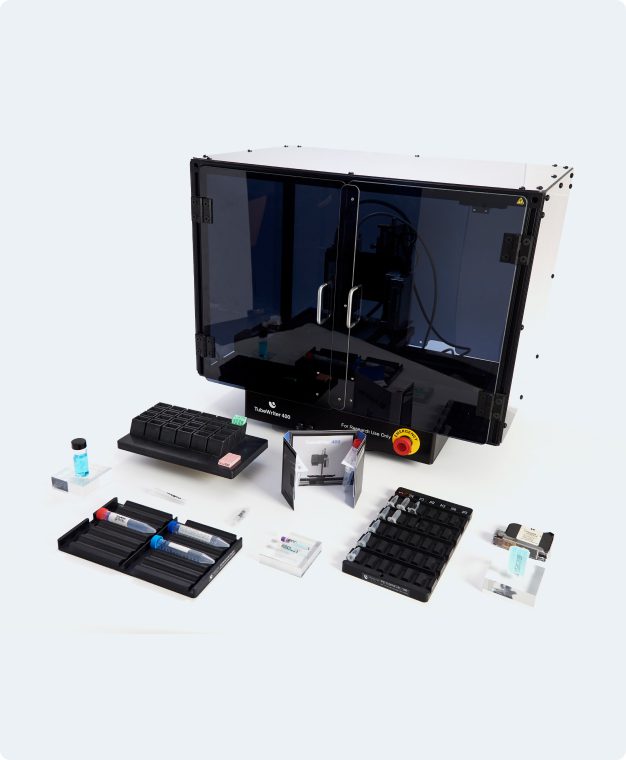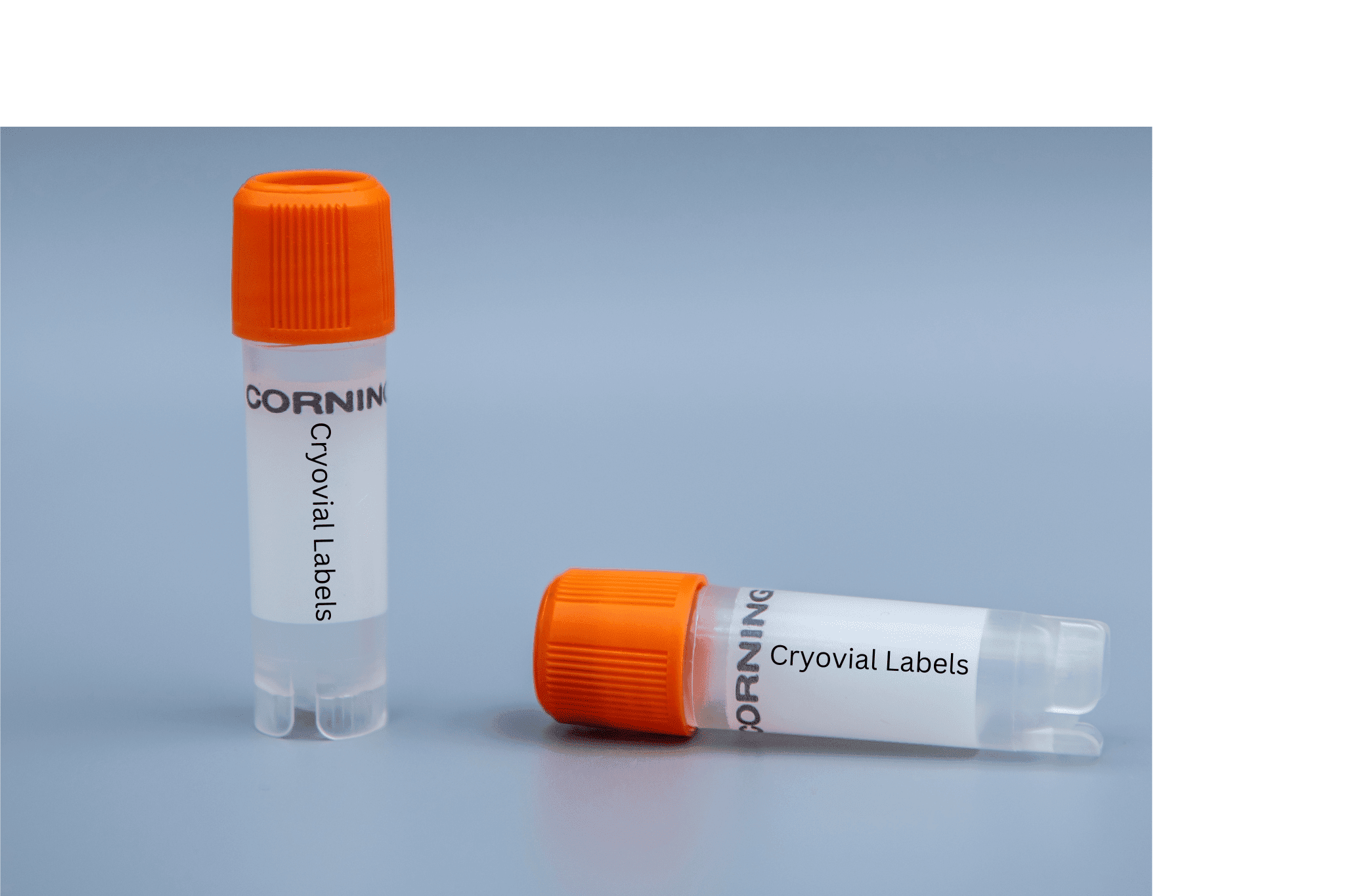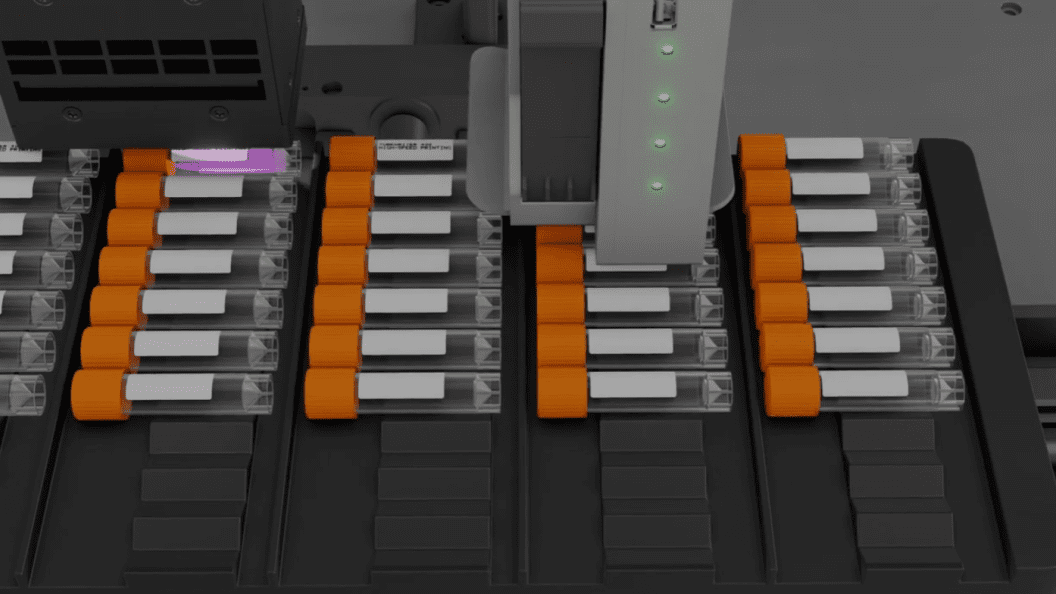Gene and cell therapy research often involves the labeling of multiple samples, which can be a tedious and time-consuming task. Traditional labeling methods such as hand labeling or adhesive labels can be error-prone, especially when done at such a high volume, and the repetitive nature contributes to staff burnout and churn. However, TubeWriter’s direct printing solution offers several benefits over traditional labeling methods that resolve these issues, making it particularly useful for gene and cell therapy research. In this article, we will explore the advantages of TubeWriter direct labeling and how it is revolutionizing the labeling process in the research community.
Why Gene and Cell Therapy Labs Love TubeWriter
Accurate Labeling
In gene and cell therapy research and clinical applications, accurate and consistent sample identification is of utmost importance. Samples are typically stored in a variety of tube and vial types, and the labels used to identify these samples must be durable and readable. Any errors or inconsistencies in labeling can have significant consequences, such as misidentification of samples, incorrect treatment or analysis, or loss of valuable research data.
TubeWriter addresses these challenges by providing a direct printing labeling solution that allows for high-quality, accurate, and consistent labeling for various types of sample tubes and vials used in gene and cell therapy research. Our advanced UV curable ink technology enables high-resolution and long-lasting labels that are resistant to smudging, fading, and storage at extreme temperatures, ensuring that the labels remain clear and legible throughout the sample storage and handling process.
Moreover, TubeWriter’s easy integration with laboratory information management systems (LIMS) allows researchers and clinicians to easily create and print labels with specific information, such as sample identifiers, barcodes, or other data that may be required for tracking and analysis purposes. This ensures that each sample is uniquely identified and that the labels are consistent and standardized, reducing the risk of errors and misidentification.
Related Read: Labeling PCR Tubes and Tube Strips
Faster & More Efficient Labeling
By improving the accuracy of the labeling process, TubeWriter can increase the laboratory throughput, allowing researchers to process more samples in less time. This can lead to faster and more efficient research outcomes and clinical applications, ultimately reducing the time and cost required for these activities.
In streamlining the process of labeling tubes and labware, TubeWriter significantly reduces the time required to label samples compared to manual labeling. With the ability to print up to 2,500 labels per hour, TubeWriter can label large batches of samples within hours. This enhancement in efficiency not only benefits your skilled staff by allowing them to focus on more valuable tasks, such as conducting analyses or specialized testing, but can help prevent repetitive strain injuries and reduce employee dissatisfaction and turnover among junior analysts who would rather be doing the “real science.”
Labeling Flexibility
TubeWriter offers a higher level of flexibility in terms of the information that can be printed on each sample tube or vial for gene and cell therapy. This can include unique identifiers, barcodes, and other important information that is required for tracking samples throughout the research or clinical process.
TubeWriter allows researchers to easily customize the printing layout and formatting according to their specific needs. It supports multiple font styles, offers a more adjustable print size with customizable print templates, and prints a wide variety of barcode types, including standard 2D barcodes. This means that they can print the required information in a format that is easily readable and scannable, saving time and reducing the risk of mistakes. This high level of flexibility also allows researchers to easily adapt to changes in their research protocols or sample tracking requirements.
Moreover, TubeWriter can print on any type of labware, and not just tubes and vials. Some examples include:
- Microplates
- Petri dishes
- Cassettes
- Slides
- Tube or vial caps
No other labeling system offers this level of flexibility.
TubeWriter for Gene and Cell Therapy Applications
Overall, the high-quality, accurate, and consistent labeling provided by TubeWriter is essential for gene and cell therapy research and clinical applications. It ensures a reliable, efficient, and accurate way to label samples, which can help to improve workflow, increase productivity, and ultimately enhance the quality of research and clinical outcomes. For more information on TubeWriter, visit our specs page or book a demo with our team.





